Keyword Research will always be an integral part of any SEO strategy. The reason is pretty simple
- You must know the set of keywords you want to target
- It impacts nearly all the other SEO tasks like Content, Website Structure, Link Building, and On-Page SEO Work
Fun Fact: Nearly 6 billion searches are performed on Google every day.
Many SEO Experts and Managers are always scratching their heads to finalise the right set of keywords. But you know what, it’s not that hard.
In this definitive guide, we will explain to you “How to do Keyword Research In 2021” alongside its “Implementation on the Website” in the easiest yet extremely effective way.
Module 1: Keyword Research Tools
There are tons of tools available in the market for keyword research, and all of them are good. But you can’t use them all, or else it will take you years to complete the Keywords Study task.
We’ve handpicked some of the best free tools for you to use based on their performance, efficiency, and results.
1. Google Keyword Planner (Free)
Google Keyword Planner is by far the most advanced and popular tool for Keywords Research. Developed by Google, there are countless features and benefits of using this tool.
The information and keywords are retrieved directly from Google.
How to do the Setup?
1. Create a Google Ads account (Set up Billing Later)
2. Navigate to Tools and Settings – Planning – Keyword Planner

3. Start your Keywords Research

2. Ubersuggest By Neil Patel (Free with Limitations)
If you want to remove the complexity of using Google Keyword Planner, this tool is the best alternative for you. Extremely easy to use without any set-up, you can instantly discover excellent keyword ideas.
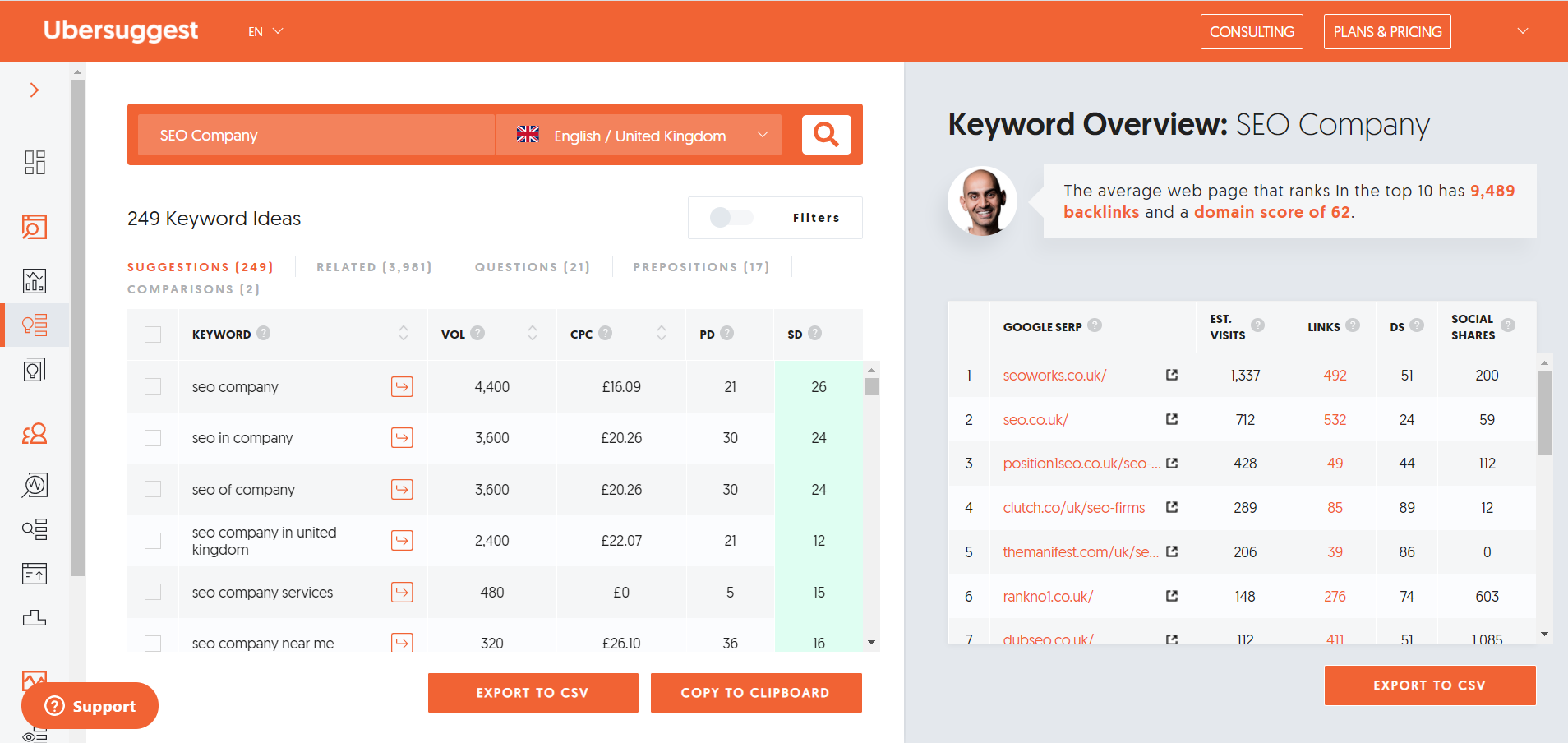
3. SEMRush (Paid)
SEMRush is NOT FREE, but the paid version is way better than any other tool. Using SEMRush, you can instantly discover the keywords on which your competitors are already ranking, saving a lot of your time and efforts.
Just add the URL and hover to the Organic Search Positions Graphs and BOOM! You’ve already stolen all of your competition keywords in no time.

Module 2: Keywords (Types, Length, And Action)
What is the definition of a Keyword? In simple words, it is your focus keyword that you want to rank on a particular Webpage. A productive SEO strategy is selecting the best possible keywords combination based on its Types, Length, and Action.
1. Keyword Types
- Service-based Keywords (Main)
- These keywords are targeted towards the main services you are offering. For example, SEO company, Website Design Company, and more.
- Service-based Keywords (Sub-Service)
- These keywords are targeted towards the Sub-Services you are offering for your Main Service— for example, Forex SEO Company, E-commerce Website Design, and more.
- LSI or Synonym Keywords
- These keywords are also known as shoulder keywords, and they go neck-on-neck with your main targeted keyword— for example, Search Engine Optimisation Company, Web Design Company, and more.
- Product Keywords
- These keywords are primarily targeted to the products you are selling on the website —for example, Smart Watch, Home Appliances, and more.
- Brand Product Keywords
- These keywords are associated with the Brand of the product—for example, Apple Smart Watch, Samsung TV, and more.
- Brand Keywords
- These keywords are targeted towards the Branding of the company. For example Telsa Media
- GEO Targeted Keywords
- These are location keywords targeted towards the local searches. We all know that Google rewards relevancy with higher SERP rankings, and that’s why the usage of GEO Keywords has increased a lot. For example, SEO Company in London, London Website Development.
2. Keyword Length
- Short Tail Keywords
- These keywords are highly competitive, and it’s better not to target them initially if you have just started your website SEO work
- Example: SEO Company, SEO Services, and more.
- These keywords are highly competitive, and it’s better not to target them initially if you have just started your website SEO work
- Mid Tail Keywords
- Mid Tail keywords are not highly competitive like Short Tail keywords, and neither are they low in competition like Long Tail Keywords.
- Example: Best SEO Company
- Mid Tail keywords are not highly competitive like Short Tail keywords, and neither are they low in competition like Long Tail Keywords.
- Long Tail Keywords
- Long Tail Keywords are the most extended form of a keyword, and they intend to a particular search query. They don’t have thousands of search volumes, but they are highly conversational.
- Example: Best SEO Company For Small Business
- Long Tail Keywords are the most extended form of a keyword, and they intend to a particular search query. They don’t have thousands of search volumes, but they are highly conversational.
3. Keyword Action
- Informational Keywords
- These keywords intend to solve the buyer’s question. It’s better not to target them until and unless you are already ranking well on all of your Navigational and Transactional Keywords.
- What is SEO, How SEO Works, and more.
- These keywords intend to solve the buyer’s question. It’s better not to target them until and unless you are already ranking well on all of your Navigational and Transactional Keywords.
- Navigational Keywords
- These keywords fall in the mid-range of a buyer’s journey. They are not informational; neither are they Transactional. But you can target some of them initially to give your campaign an initial SEO boost.
- Best SEO Company, Affordable SEO Packages, and more.
- These keywords fall in the mid-range of a buyer’s journey. They are not informational; neither are they Transactional. But you can target some of them initially to give your campaign an initial SEO boost.
- Transactional Keywords
- These keywords are highly conversational because of the searcher’s intent – They have already decided that they want to go ahead with the service and look for the best price, offer, or quote.
- SEO service quote, Best SEO Packages, and more.
- These keywords are highly conversational because of the searcher’s intent – They have already decided that they want to go ahead with the service and look for the best price, offer, or quote.
NOTE: For best results, don’t go too heavy on any Keyword Types, Length, and Actions. Make sure that you pick and choose the best combination for your targeted keyword cluster.
Up to this point, we have learned about the keyword study tools and different keywords types, action, and length. Now let’s dive straight into the sea of keywords.
Module 3: Implementation On a Google Spreadsheet
There are thousands of blogs on the Internet explaining how to do the keywords study, the types of keywords you should pick, and so on. But, no one wants to show the hard part of keywords finalization and implementation.
But don’t worry, we will show you exactly how to gather all this data and finalize your keywords.
Note: Only Google Keyword Planner Example is used because of its wide usage.
GKP Example:
- STEP 1: Type in your targeted keyword in “Discover new keywords” box. Then select your language and Country accordingly and click on “Get Results”.
- Don’t add all the service keywords at once, or else you’ll mix up everything. Instead, only add a few keywords for individual services.
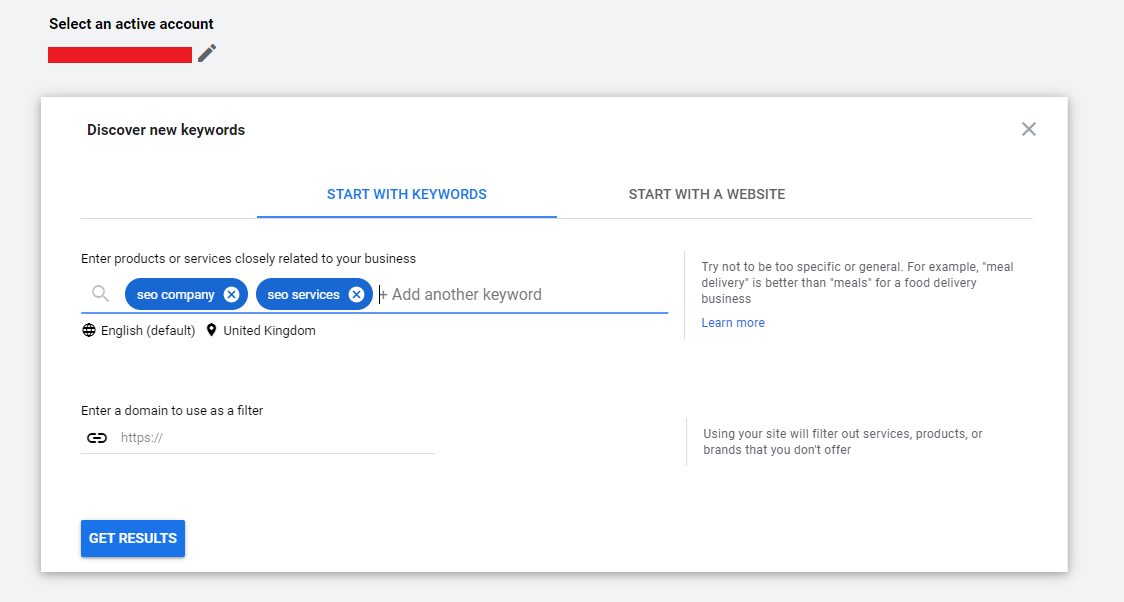
- STEP 2: Once you have the keywords ideas in the GKP tool, the next step is refining your keywords. Remove the category that you think is not relevant to your niche.
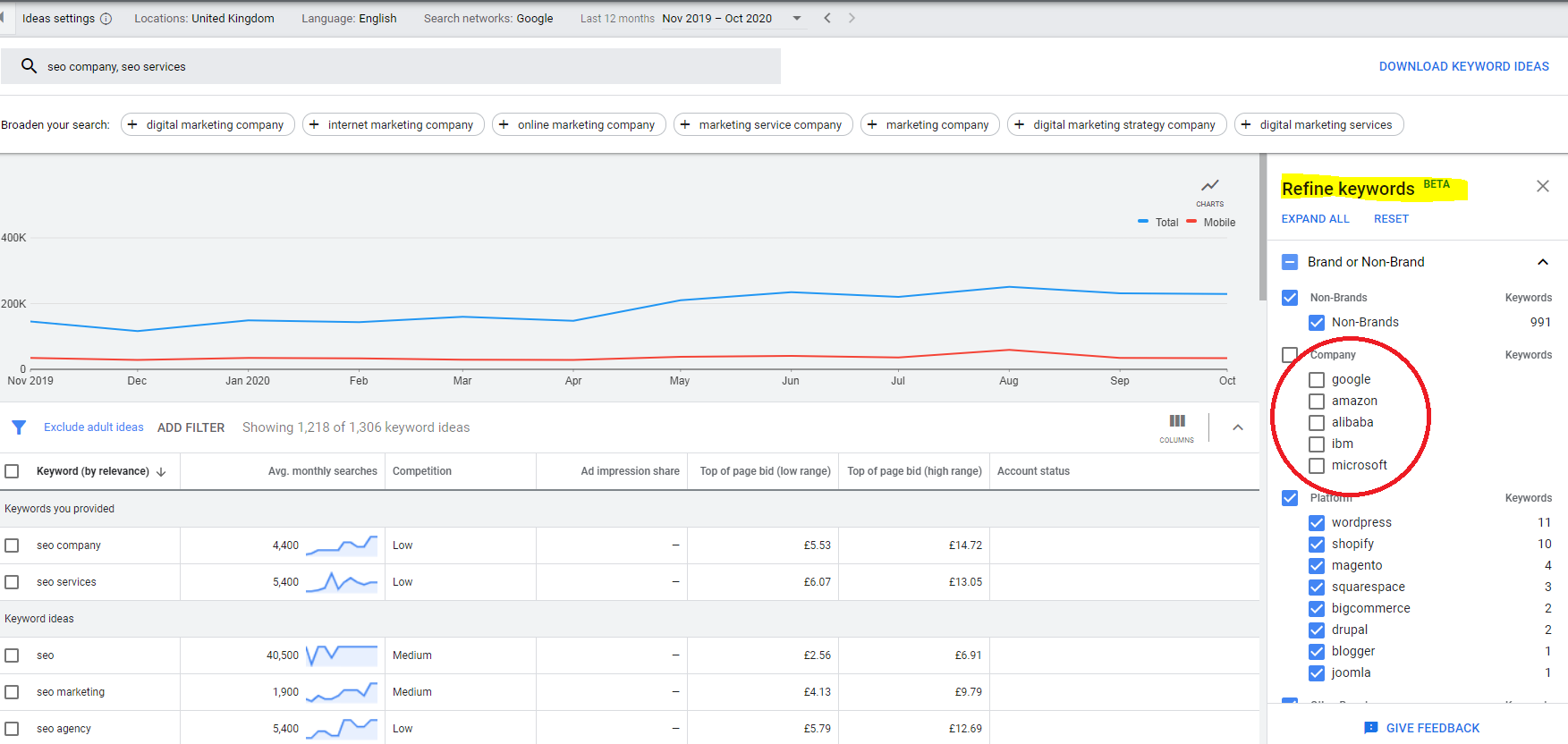
- STEP 3: You can also “Add a Filter” containing a word of your primary service keyword for more precision. Click on Add Filter – Keyword – “Your Main Keyword” and then click on Download Keyword Ideas (Google Sheets).
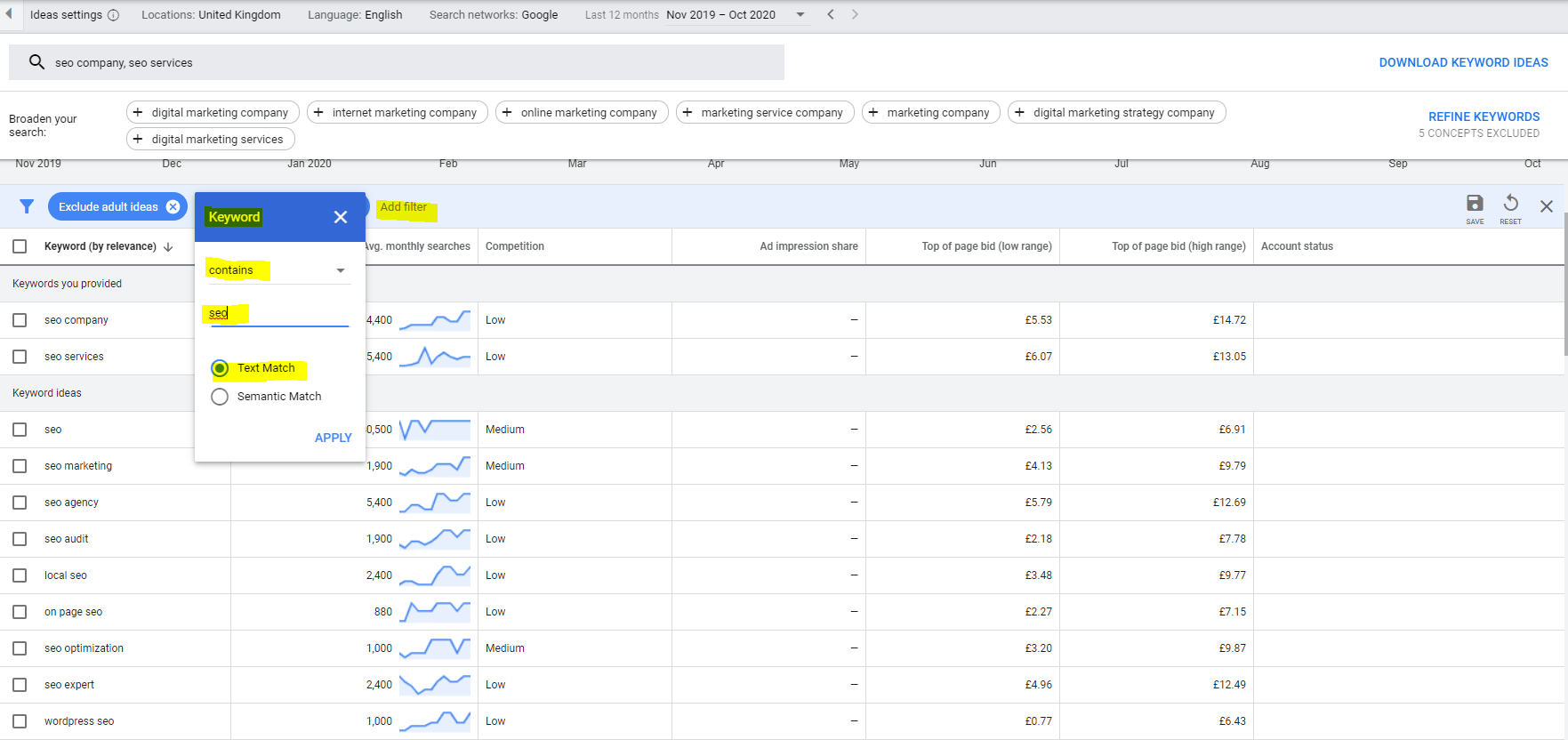
- STEP 4: Remove all the unnecessary columns, and then apply a filter on Volume Column (High to Low). Select All – Data – Create a Filter. Other than that, don’t modify anything.
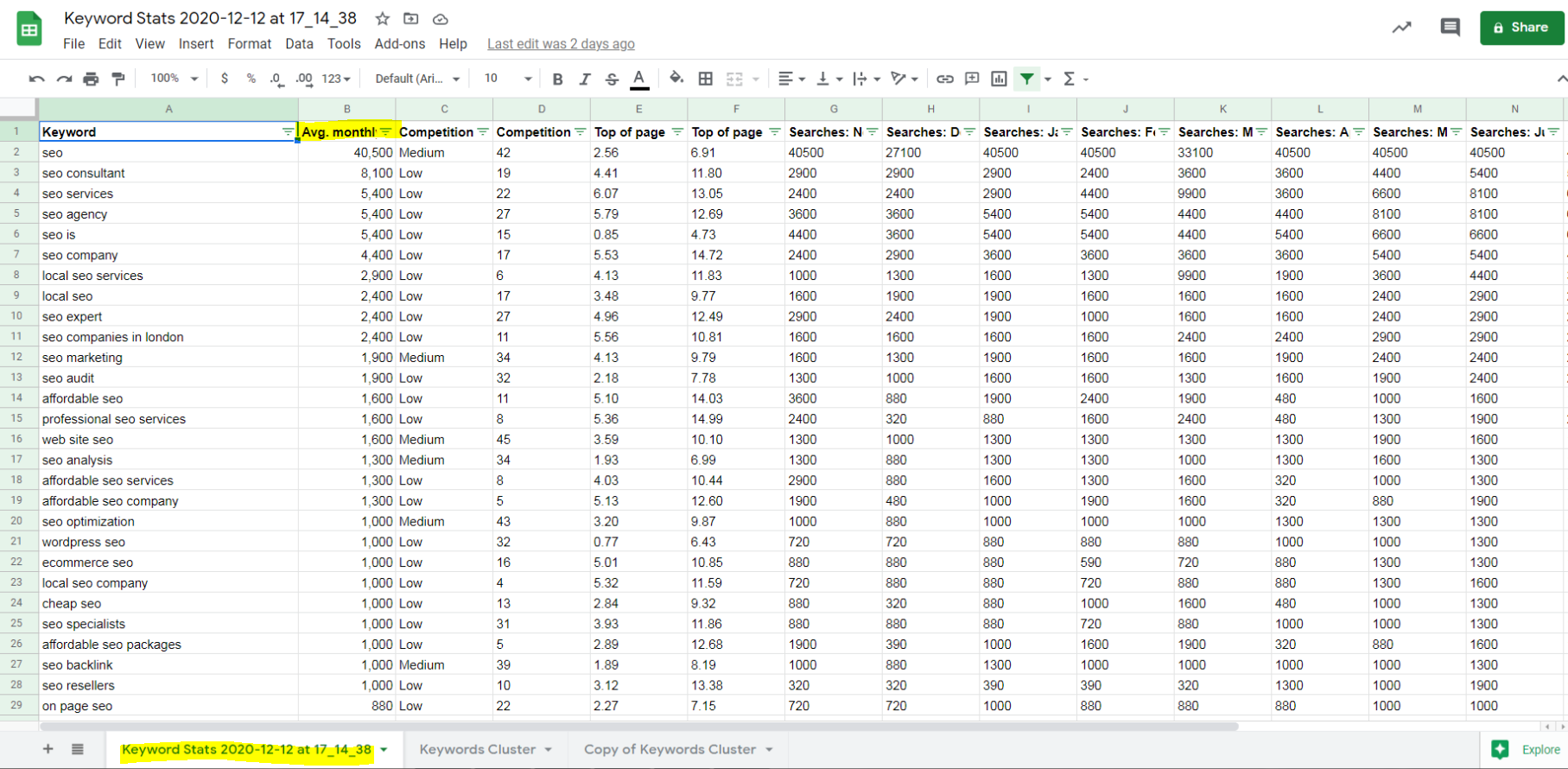
- Implementation Example 1:
- Study all the keywords individually and divide them into three sections: Exact, Mid Tail, and Long Tail.
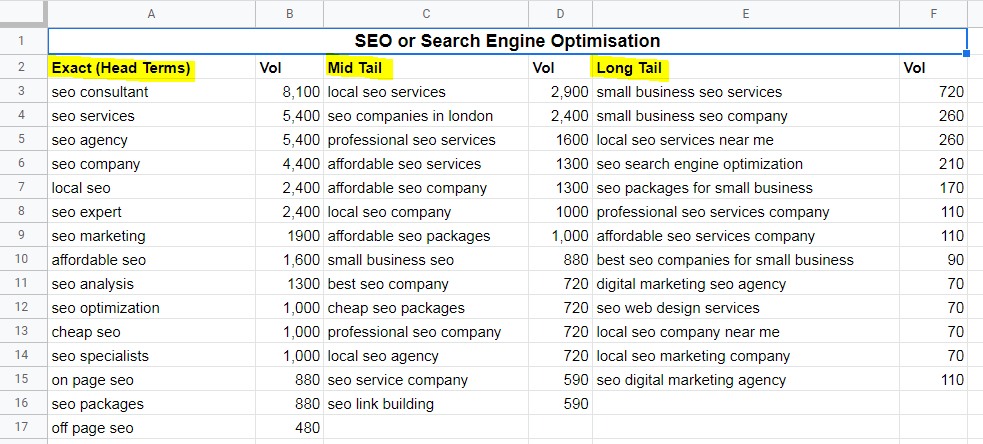
- Implementation Example 2:
- Study all the keywords individually and divide them according to their relevant categories.
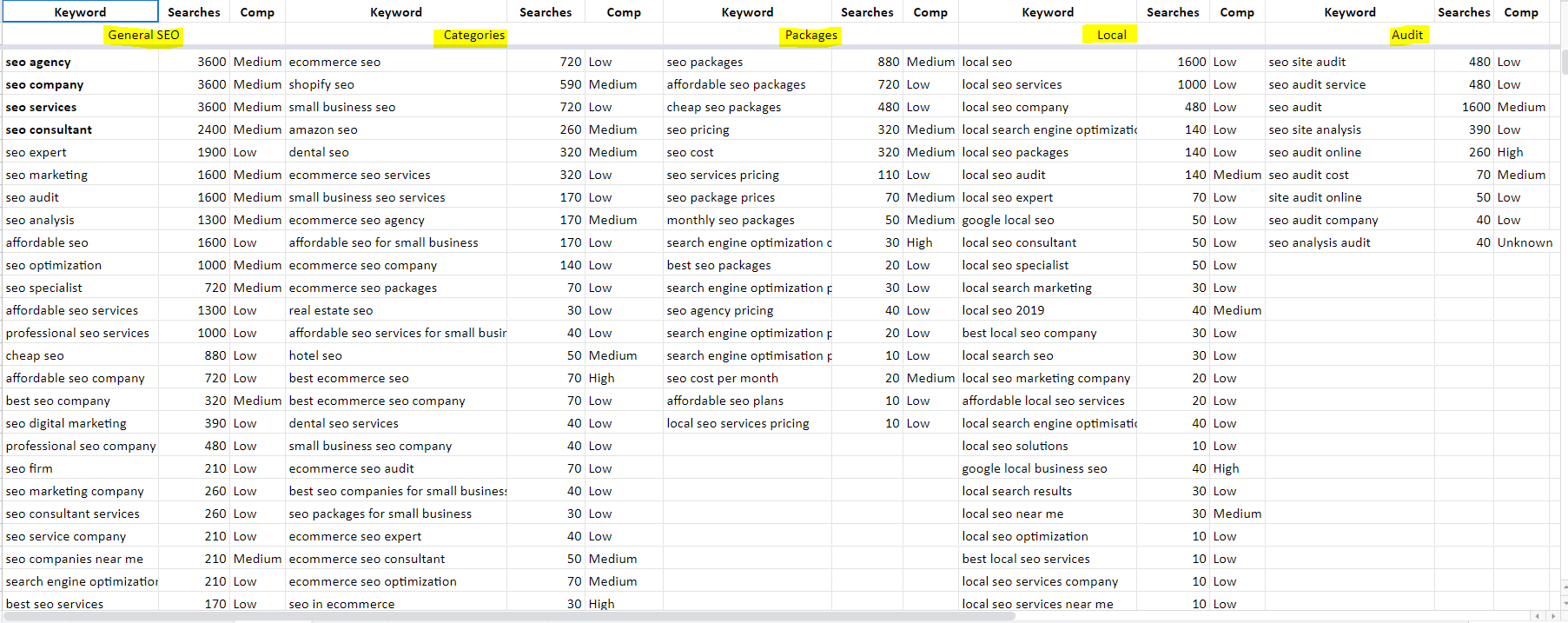
Carry on the same procedure for all of your other services and products.
In the end, you will have that perfect keywords research sheet you were looking for. You can then decide which keywords to target initially with their variations.
Module 4: Implementation On The Website (Bonus)
Now that you have already covered the hard grounds, it’s time to make you a real winner.
Study all the keywords data that you have achieved up to this point and allocate them relevant pages as per their relevancy. You can then create your website structure accordingly for a better search ranking opportunity.
Fun Fact: 95% of people only look at the first page, and half of them click only on the first 3 results shown.
So it would be best if you are extra cautious while trying to target the keywords on the webpage.
1. Meta Tags
- Meta Title (65 Characters)
- The best practice is to use the exact match version of your targeted Keyword first up in the Title. But you know what, everyone is doing that and therefore we won’t because we don’t want to increase our competitors.
- We will instead use the Mid Tail Keyword variation first up in the Title tag, which will automatically cover the Exact Match version of the primary Keyword too, giving us that extra little keyword cushion.
- DO’s – Affordable SEO Company, Professional SEO Services
- DON’T’s – SEO Company, SEO Services
- EXTRA TIP:
- For maximum benefits, make sure that your Title at least covers up 3-4 different variations of keywords along with the modifiers. (best, local, cheap, and more.)
- Meta Description (150 Characters)
- Think of Meta Description as a message you want to convey to your users. Why should they prefer you above everyone else? And at the same time, you want to target your keywords too.
- Pick and choose your best 3-4 keywords that you want to target in the Meta Description. And then, think of the other keyword variations you can get for the same keywords using the modifier combinations.
- Top 3 Keywords: SEO Services, SEO Consultant, SEO Analysis
- General Modifiers: Affordable, Professional, Local, Free
- META DESC EXAMPLE: We provide Affordable SEO Services and Professional SEO Consultation to Local Businesses in the UK. With us, you’ll always be the #1. Get your Free SEO Analysis Report now.
- EXTRA TIP:
- Don’t count your Meta Description as Meta Keywords, and refrain yourselves from addinga cluster of keywords. Focus on the overall message you want to convey.
Ensure that you are always writing your meta title and meta description keeping the users and CTR% in mind, and never indulge in Keyword spamming. Because eventually, you want the users to click on your Organic Listing – Visit the website – and Take your desired action.
2. Content Optimisation
Content isKING, and no one can substitute that (maybe Google can – One Day). Everything in SEO rotates around the Content and whether or not you will succeed depends on it too.
So, how do you write perfect keywords targeted Content on the Webpage? Well, the answer is pretty simple.
Just go through your keywords study section and discover the clusters which you can use as various sections on that particular Webpage. Then plan your Content according to these sections and add the relevant keywords to it.
- Example: SEO Company
- Content Length: Approx 1200 to 1500 Words
- Sections
- Search Engine Optimisation (SEO) Company(H1) – Main Section
- Our Best SEO Services (H2)- Sub Section
- Affordable SEO Packages (H2)- Sub Section
- Award Winning SEO Agency (H2) – Sub Section
- Consult Our Local SEO Specialist Today (H2)- CTA Sub Section
- EXTRA TIP:
- Target your main keywords and all their variations in the First and Second Paragraph for best results.
3. Headings, Subheading, Bold and Italic
You just don’t want to add tons and tons of boring Content on a Webpage. Do you?
Your end goal must be to make that Webpage look engaging. And by using Heading and Subheading Tags alongside Bold and Italic combinations, your Webpage will not only look attractive, but you will also have the opportunity to highlight your keywords more precisely.
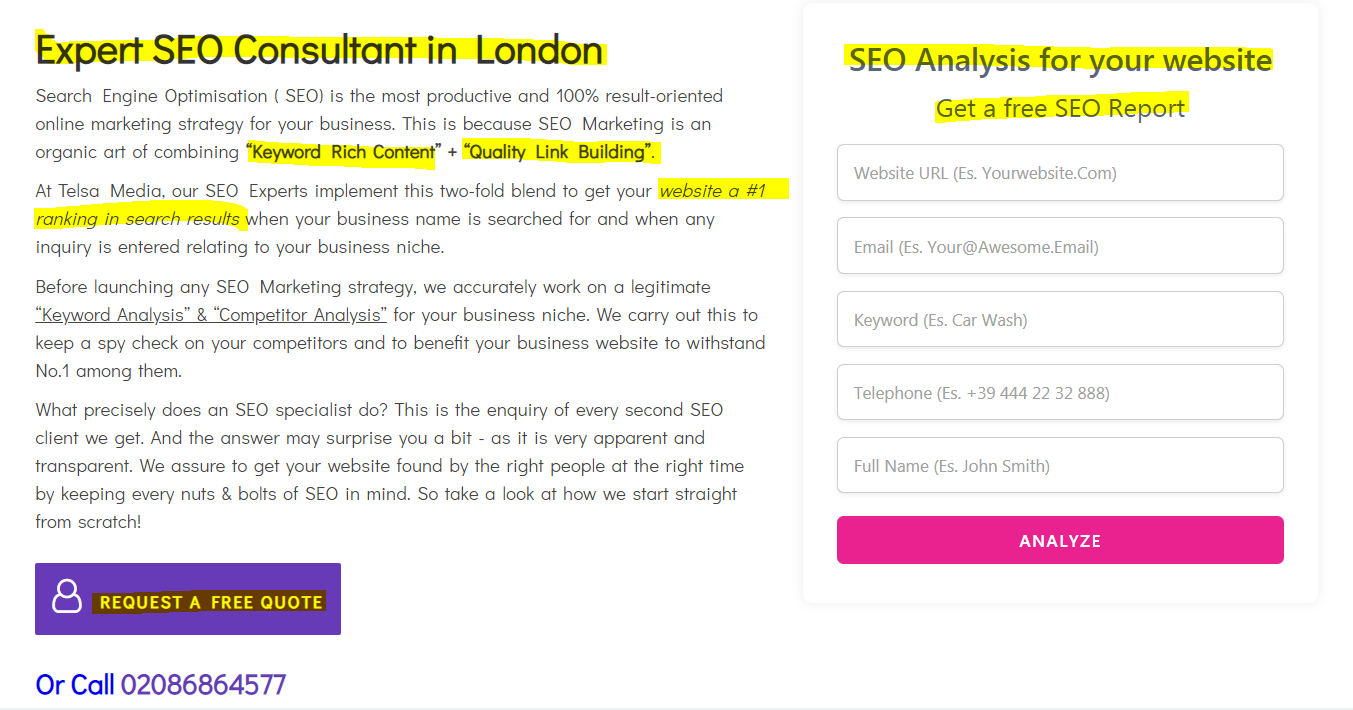
You can add your Main/Primary Keyword in the H1 tag and your Secondary Keywords in the H2 tag. You can further use Bold and Italic variations to highlight your hook points that you want the users to check.
4. Image SEO Optimisation
Images are vital in the modernized SEO world because Graphics are more engaging nowadays instead of Content. But you know what – We can also use these images for our own SEO Advantage by practising Image SEO Optimisation technique.
- Img Alt Text
- To date, Search Engine Bots cannot identify the Image by just crawling it. They need added information through Img Alt Text, and we can use this to add related Keywords. Recommended: Mid-Tail Keywords
- Img File Name
- You can create keyword enrich name for your Images and upload it on your Website for more SEO Power.
- How to do On-Page SEO and Best Ways For Link Building sounds much better than Image1 or Img0001.
5. Internal Link Anchor Text
Internal Link is your best source to reveal your pages to the search spiders. It’s widely considered as a Map for Googlebot to crawl your Website. Then why not take full advantage of this fantastic feature?
Make sure that the Anchor Text of your Internal Link is a Mid Tail Variation of your Primary Keyword. Googlebot, in all likelihood, will follow your Internal Link to the secondary page via your Keyword Enriched “Anchor Text”.
Conclusion
It’s always a Hard-Time to say Goodbye!
We have finally rounded up all the mysteries and speculations surrounding the best possible way to do the Keywords Study and largely its implementation on the Website.
Now, everything is up to you, and it’s your turn to implement this guide to your advantage.
We would definitely like to hear your opinion or queries in the comments section.


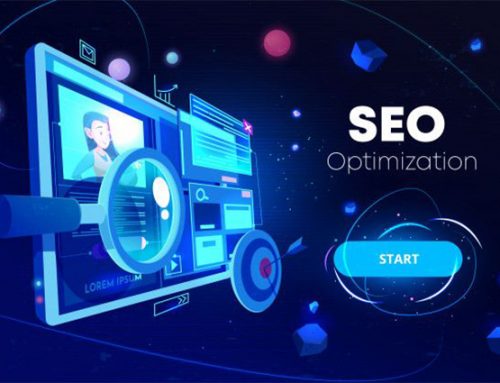
Leave A Comment